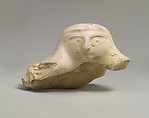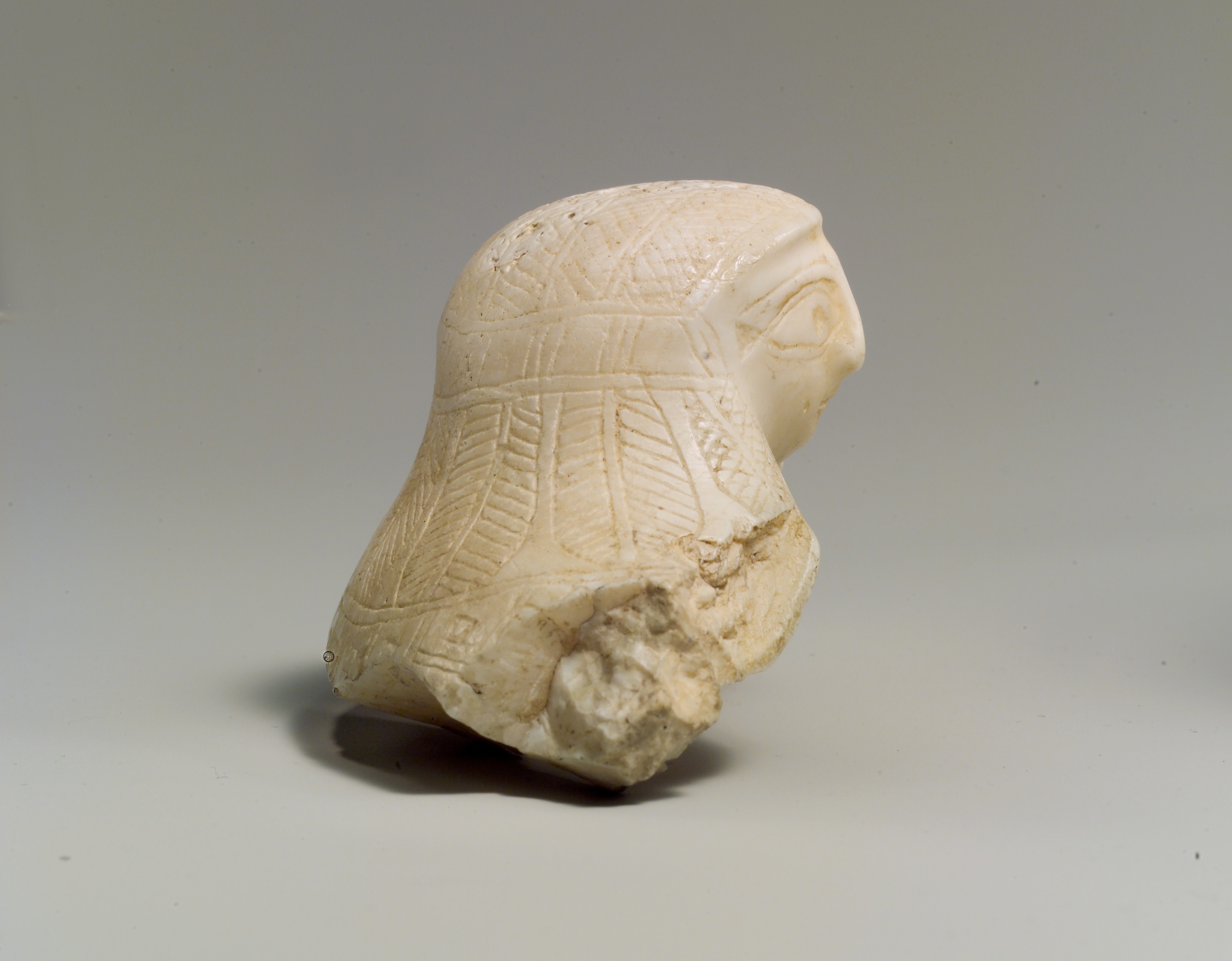Fragment of a shell with a sculpted female head
Not on view
The shell of a species of large clam (Tridacna squamosa), native to the Indian Ocean, the Red Sea, and the Persian Gulf, was used to carve a distinctive type of cosmetic container during a short period from the late seventh to the early sixth century B.C. More than a hundred containers of this type survive, and have been found throughout the Near East and Mediterranean, as far east as Iran and as far west as Italy. Unworked shells have been found in Palestine and Transjordan, suggesting that the workshops where these containers were manufactured were located in these regions.
This fragment of a cosmetic container preserves the thick hinge of the shell, which was carved as the three-dimensional head of the figure whose body was incised on the shell’s outer surface. The figure’s very large eyes are outlined with double incised lines, and the pupils are highlighted with drilled holes. The other features are simplified, such as the small mouth represented by two incised lines. A ridge at the forehead suggests a headband, which wraps around the back of the head, holding back the hair which is represented as individual feather-like hatched locks. Traces of a decorative border can be seen at the lower edge of the hair, which would have continued on the figure’s garment when the container was complete.
Due to rights restrictions, this image cannot be enlarged, viewed at full screen, or downloaded.
This artwork is meant to be viewed from right to left. Scroll left to view more.



